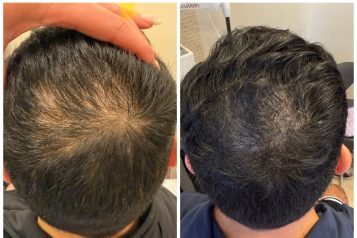In executive leadership, managing high-stakes decisions while maintaining personal well-being can be challenging. However, physical fitness plays a crucial role in enhancing executive performance, offering benefits that directly impact leadership abilities and overall work effectiveness. Regular exercise not only improves cognitive function and energy levels but also helps executives manage stress and regulate emotions, all of which contribute to better decision-making and productivity. Here’s a closer look at how physical fitness impacts executive performance and some practical tips for integrating exercise into a busy schedule.
 Photo Credit: Shutterstock
Photo Credit: Shutterstock
Cognitive Function
Executives are required to think critically, make decisions under pressure, and solve complex problems daily. Regular physical exercise has been shown to enhance cognitive functions such as memory, attention, and decision-making skills. Cardiovascular activities like running or cycling, as well as strength training, can increase blood flow to the brain, supporting improved focus and mental clarity. This cognitive boost allows leaders to process information more efficiently, approach tasks strategically, and make clearer decisions—key factors in excelling at executive responsibilities.
Stress Management
Stress is an inevitable part of executive roles, but its negative effects can be mitigated through consistent physical activity. Exercise acts as a natural stress reliever by reducing levels of cortisol, the body’s primary stress hormone. For executives, maintaining a regular exercise routine helps manage the pressure and anxiety associated with demanding work environments. By engaging in physical activity, leaders can maintain composure, reduce mental fatigue, and approach challenges with a clearer mind and renewed energy. This ability to stay calm under pressure can significantly enhance both personal and organizational performance.
Energy and Productivity
One of the most noticeable benefits of regular exercise is an increase in energy levels. It’s easy to think that exercise requires more energy, but in fact, it stimulates the release of endorphins and improves overall stamina. Executives who stay physically fit are likely to feel more energized throughout the day, leading to better time management and higher productivity. Physical fitness can also improve sleep quality, allowing leaders to rest more fully and be more focused when they’re awake, thus enhancing their ability to manage both their personal and professional lives more effectively.
Mood and Emotional Regulation
Leadership requires emotional resilience and the ability to stay grounded, especially in challenging or high-stakes situations. Exercise contributes significantly to mood regulation by releasing neurotransmitters like serotonin and dopamine, which are responsible for feelings of happiness and contentment. A positive outlook not only improves an executive’s emotional state but also enhances their ability to lead teams, handle conflicts, and maintain productive relationships in the workplace. By fostering emotional stability, fitness can help executives build stronger, more cohesive teams and navigate workplace dynamics with greater ease.
Integrating Exercise into a Demanding Work Schedule
With the many demands on an executive’s time, it may seem difficult to prioritize fitness. However, by incorporating exercise into a daily routine, executives can experience the benefits without sacrificing work responsibilities. Here are some tips for integrating physical fitness into a demanding schedule:
- Prioritize Consistency Over Duration: Rather than aiming for long workouts, focus on short, regular exercise sessions. Even 15-20 minutes of physical activity can yield significant benefits. The key is consistency, not the length of the workout.
- Embrace High-Intensity Interval Training (HIIT): HIIT workouts are perfect for busy executives. These efficient workouts deliver maximum results in minimal time, typically lasting 15-30 minutes. They combine bursts of intense activity with brief rest periods, providing a great way to boost cardiovascular health, strength, and stamina in a time-efficient manner.
- Schedule Exercise as a Non-Negotiable Appointment: Treat exercise as a mandatory part of your workday. Just as you would schedule an important business meeting, block out specific times for physical activity. Having a set time ensures that fitness becomes a non-negotiable part of your routine, contributing to long-term success.
- Utilize Technology: Technology can help make fitness routines more accessible. Leverage fitness apps or online platforms that offer guided workouts that can be done anywhere, anytime. This flexibility is particularly helpful for executives who are often traveling or working late. With just a smartphone, it’s possible to access a wide range of workouts, from yoga to strength training, ensuring that fitness remains part of the daily routine.
- Incorporate Active Breaks: Take advantage of short breaks during the workday by incorporating quick physical activity. A brisk walk, a few stretches, or bodyweight exercises like squats or push-ups can provide a quick energy boost and refresh your mind, helping you stay focused for the rest of the day.
- Make Exercise a Social Activity: Exercise doesn’t have to be a solitary endeavor. Encourage colleagues to join you for walking meetings or group workouts. This not only helps maintain accountability but also fosters team-building and a culture of wellness within your organization.
- Tailor Workouts to Personal Preferences: Choose activities that you enjoy. Whether it’s cycling, swimming, or lifting weights, selecting exercises that bring pleasure increases the likelihood of sticking to your routine. Enjoyment is a powerful motivator, and when exercise becomes something you look forward to, it’s easier to make it a consistent habit.
By prioritizing physical fitness, executives can experience improved cognitive function, reduced stress, higher energy levels, and better emotional regulation—factors that are all essential to effective leadership and overall performance. Incorporating exercise into a demanding work schedule may seem challenging, but with the right approach, it can become an integral part of a successful and balanced executive lifestyle. Rather than viewing exercise as an extra task, consider it an essential component of both professional achievement and personal well-being. The result is not only better performance at work but a more fulfilling and productive life overall.
For more clarity on what truly benefits your health, reach out to Dr. Kern Brar today.
For more information, visit Dr. Kern Brar's social media.





















